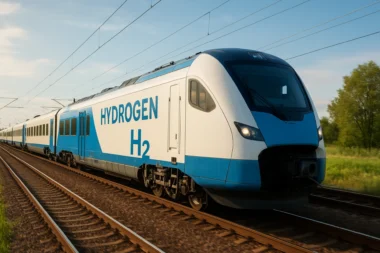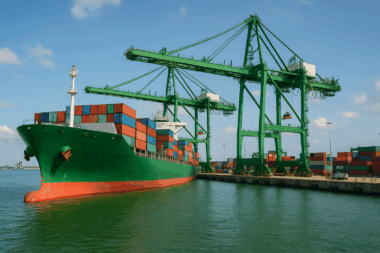Introduction:
Aquatic drones represent a cutting edge innovation in the realm of autonomous vehicles, offering unprecedented capabilities for maintaining and inspecting waterways. These unmanned systems utilize advanced technologies to navigate rivers, lakes, and coastal areas, performing vital tasks such as environmental monitoring, infrastructure inspection, and pollution control. In this article, we explore the role of aquatic drones in revolutionizing waterway management and the various applications driving their adoption.
Understanding Aquatic Drones:
Aquatic drones, also known as unmanned surface vessels (USVs) or autonomous surface vehicles (ASVs), are robotic platforms designed to operate on the surface of water bodies autonomously or under remote control. These drones integrate various sensors, propulsion systems, and communication tools to navigate waterways efficiently while collecting data and performing designated tasks. Let’s delve into the key components and functionalities of aquatic drones:
Sensing Systems:
Sonar Sensors: Aquatic drones utilize sonar technology to map the underwater terrain, detect submerged objects, and assess water depth. For example, a drone equipped with side scan sonar can create detailed images of the seabed to identify underwater structures or hazards.
Cameras: High resolution cameras mounted on aquatic drones capture visual data above and below the water’s surface, facilitating inspection and surveillance tasks. This visual data can reveal environmental changes, wildlife activity, or signs of pollution.
Environmental Sensors: Sensors measuring parameters such as water quality, temperature, pH level, and turbidity enable aquatic drones to monitor aquatic ecosystems and detect pollution events. By analyzing environmental data, these drones provide valuable insights into ecosystem health and water quality.
Propulsion and Navigation:
Electric Motors: Aquatic drones often utilize electric propulsion systems powered by batteries or solar panels, enabling silent and eco friendly operation. These motors propel the drone through the water while minimizing disturbance to aquatic life.
GPS and GNSS Receivers: Global Positioning System (GPS) and Global Navigation Satellite System (GNSS) receivers provide precise positioning information, enabling accurate navigation and waypoint following. This allows aquatic drones to navigate predefined routes or patrol areas with high precision.
Obstacle Avoidance Systems: To navigate safely in dynamic environments, aquatic drones are equipped with collision avoidance sensors and algorithms. These systems detect obstacles such as rocks, buoys, or other vessels and adjust the drone’s course to avoid collisions.
Communication and Control:
Remote Control Interfaces: Operators can remotely control aquatic drones using radio transmitters, mobile apps, or web based interfaces. This allows for real time command and control from shore based stations or support vessels.
Data Transmission: Aquatic drones transmit sensor data and telemetry information to control centers or cloud based platforms via wireless communication links. This data transmission enables operators to monitor drone performance, analyze collected data, and make informed decisions in real time.
Software plays a crucial role in the operation and control of aquatic drones, enabling users to plan missions, monitor vehicle status, process sensor data, and analyze collected information. Here are some essential types of software required for aquatic drone operations:
Mission Planning and Control Software:
Mission planning software allows users to define waypoints, set flight paths, and specify mission parameters such as altitude, speed, and duration.
Control software facilitates real time monitoring and remote operation of aquatic drones during missions, providing users with telemetry data, vehicle status updates, and manual control capabilities.
Examples include open source platforms like Mission Planner, QGroundControl, and ArduPilot, as well as proprietary software developed by drone manufacturers.
Navigation and Guidance Algorithms:
Navigation software utilizes algorithms to calculate optimal routes, avoid obstacles, and maintain vehicle stability and control.
Guidance algorithms incorporate sensor data (e.g., GPS, IMU) to determine position, velocity, and orientation, enabling precise navigation and waypoint following.
Examples include GPS navigation software, inertial navigation systems (INS), and obstacle avoidance algorithms.
Sensor Data Processing and Analysis Tools:
Sensor data processing software processes raw sensor data collected by aquatic drones, including imagery, sonar readings, water quality measurements, and environmental data.
Analysis tools enable users to visualize, interpret, and analyze sensor data to extract meaningful insights and make informed decisions.
Examples include GIS software (e.g., ArcGIS, QGIS), image processing libraries (e.g., OpenCV, MATLAB), and data analysis platforms (e.g., Python libraries like Pandas and NumPy).
Remote Sensing and Mapping Software:
Remote sensing software processes aerial and underwater imagery collected by aquatic drones to generate maps, 3D models, and geospatial datasets.
Mapping tools facilitate the creation of bathymetric maps, habitat maps, and shoreline surveys, supporting applications such as environmental monitoring, habitat mapping, and coastal management.
Examples include photogrammetry software (e.g., Pix4D, Agisoft Metashape), GIS mapping software (e.g., ArcGIS, Global Mapper), and specialized hydrographic survey software.
Data Transmission and Communication Software:
Data transmission software manages the transfer of data between aquatic drones and ground control stations, as well as between drones and remote servers or cloud platforms.
Communication protocols enable real-time telemetry, command, and control over wireless networks (e.g., Wi-Fi, cellular, satellite).
Examples include communication middleware (e.g., MAVLink, ROS), telemetry software (e.g., MAVProxy), and data transmission protocols (e.g., TCP/IP, UDP).
Simulation and Training Software:
Simulation software provides virtual environments for testing and training aquatic drone operators, allowing users to simulate mission scenarios, practice maneuvers, and evaluate performance.
Training tools offer interactive tutorials, instructional videos, and educational resources to familiarize users with drone operation, maintenance, and safety procedures.
Examples include drone simulation platforms (e.g., AirSim, Gazebo), training courses (e.g., FAA Part 107 training), and educational resources (e.g., drone pilot handbooks, online courses).
By leveraging these software tools, operators can effectively plan, execute, and analyze missions using aquatic drones for a wide range of applications, including environmental monitoring, infrastructure inspection, scientific research, and maritime surveillance.
Applications of Aquatic Drones:
Environmental Monitoring:
Aquatic drones play a crucial role in monitoring water quality, detecting harmful algal blooms, and assessing the health of aquatic ecosystems. For example, a drone equipped with water quality sensors can detect changes in nutrient levels or pollutant concentrations, providing early warning of environmental degradation.
These drones can collect water samples, measure nutrient concentrations, and monitor changes in biodiversity, providing valuable insights for environmental management and conservation efforts.
Infrastructure Inspection:
Aquatic drones are employed to inspect bridges, dams, levees, and other waterway infrastructure for signs of damage, deterioration, or structural defects. For instance, a drone equipped with high resolution cameras can capture detailed images of bridge components, allowing engineers to identify cracks, corrosion, or other issues.
Using cameras and sensors, these drones can perform visual inspections, identify potential hazards, and generate detailed reports for maintenance planning and risk assessment.
Pollution Control and Response:
In the event of oil spills, chemical leaks, or other pollution incidents, aquatic drones can be deployed to assess the extent of contamination, monitor cleanup operations, and track the movement of pollutants. For example, a drone equipped with oil spill detection sensors can identify oil slicks on the water’s surface and track their spread over time.
These drones can also deploy absorbent booms, dispersants, or skimmers to contain and mitigate the impact of pollution, minimizing harm to the environment and wildlife.
Case Studies
Environmental Monitoring in Coastal Waters:
In the Great Barrier Reef Marine Park in Australia, aquatic drones equipped with water quality sensors and cameras are used to monitor coral reefs and seagrass beds. These drones collect data on temperature, salinity, and nutrient levels, helping researchers assess the health of the ecosystem. By analyzing the data collected over time, researchers can identify trends, detect changes in water quality, and monitor the impact of human activities on marine ecosystems.
Bridge Inspection on Inland Waterways:
In the United States, the Minnesota Department of Transportation (MnDOT) utilizes aquatic drones to inspect bridges spanning rivers and lakes. These drones are equipped with high resolution cameras and sonar sensors to detect cracks, corrosion, and scour around bridge piers. By capturing detailed images and collecting inspection data, MnDOT engineers can assess the condition of bridge structures without the need for costly and time consuming inspections. This approach allows for more frequent and efficient bridge inspections, ensuring the safety and reliability of transportation infrastructure.
Future Directions and Challenges:
As aquatic drone technology continues to advance, new opportunities and challenges emerge in the field of waterway management. Future developments may include:
1. Enhanced Autonomy: Improvements in artificial intelligence and machine learning enable aquatic drones to operate autonomously in complex environments, adapting to changing conditions and optimizing mission performance.
2. Integration with Other Technologies: Aquatic drones may be integrated with satellite imagery, aerial drones, and underwater robots to enhance data collection, coverage, and analysis capabilities.
3. Regulatory Frameworks: The development of regulatory frameworks and standards for the safe and responsible operation of aquatic drones is essential to ensure compliance with maritime regulations and environmental laws.
4. Environmental Sensing Technologies: Advancements in sensor technology enable aquatic drones to detect emerging pollutants, monitor microplastic contamination, and assess the impact of climate change on aquatic ecosystems.
Conclusion:
Aquatic drones represent a versatile and cost effective solution for waterway maintenance and inspection, offering numerous benefits in terms of environmental monitoring, infrastructure management, and pollution control. By harnessing the power of automation and remote sensing, these unmanned systems play a vital role in safeguarding water resources and promoting sustainable development. As technology continues to evolve, aquatic drones will undoubtedly play an increasingly important role in the management and protection of our oceans, rivers, and lakes.



